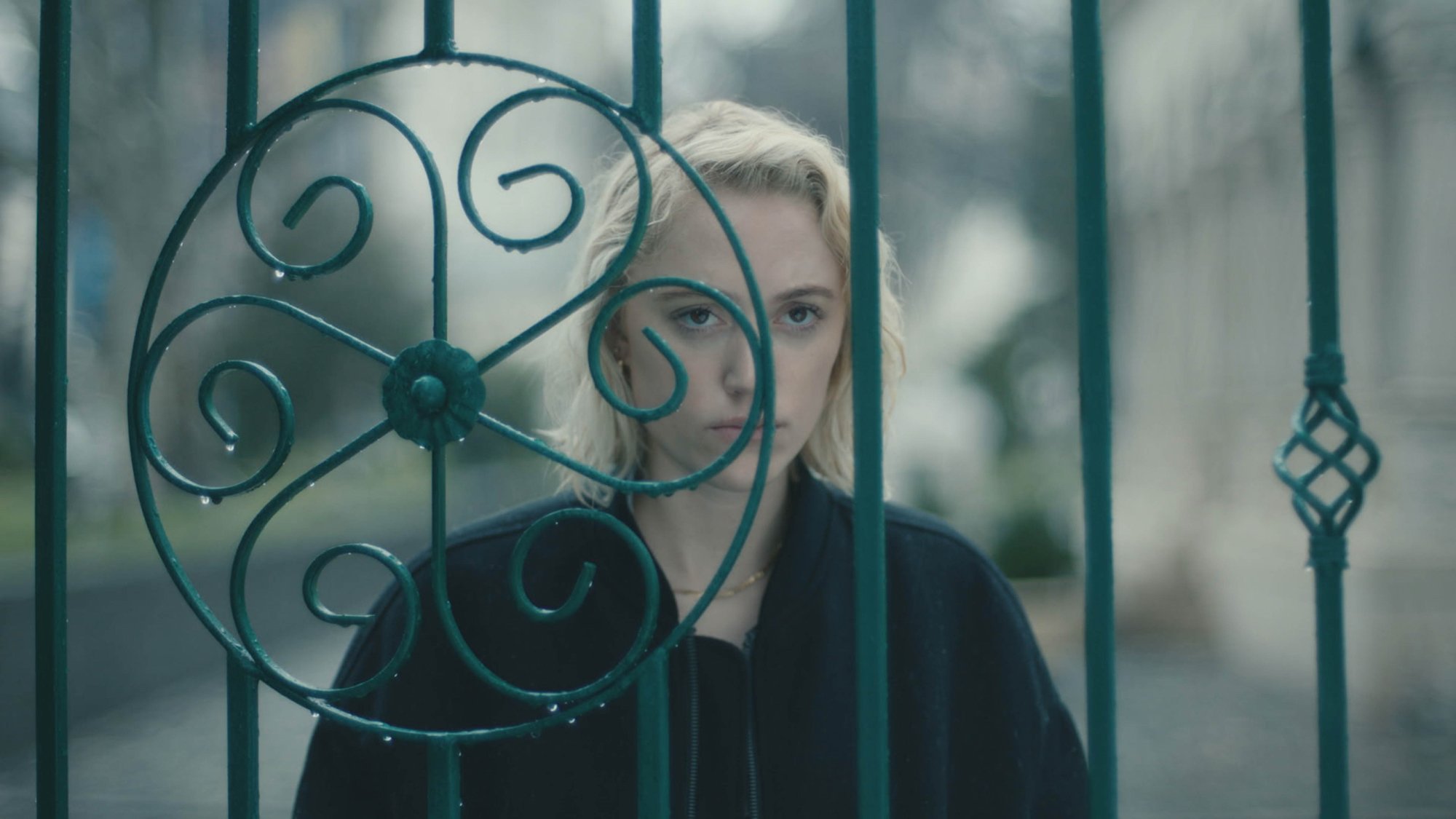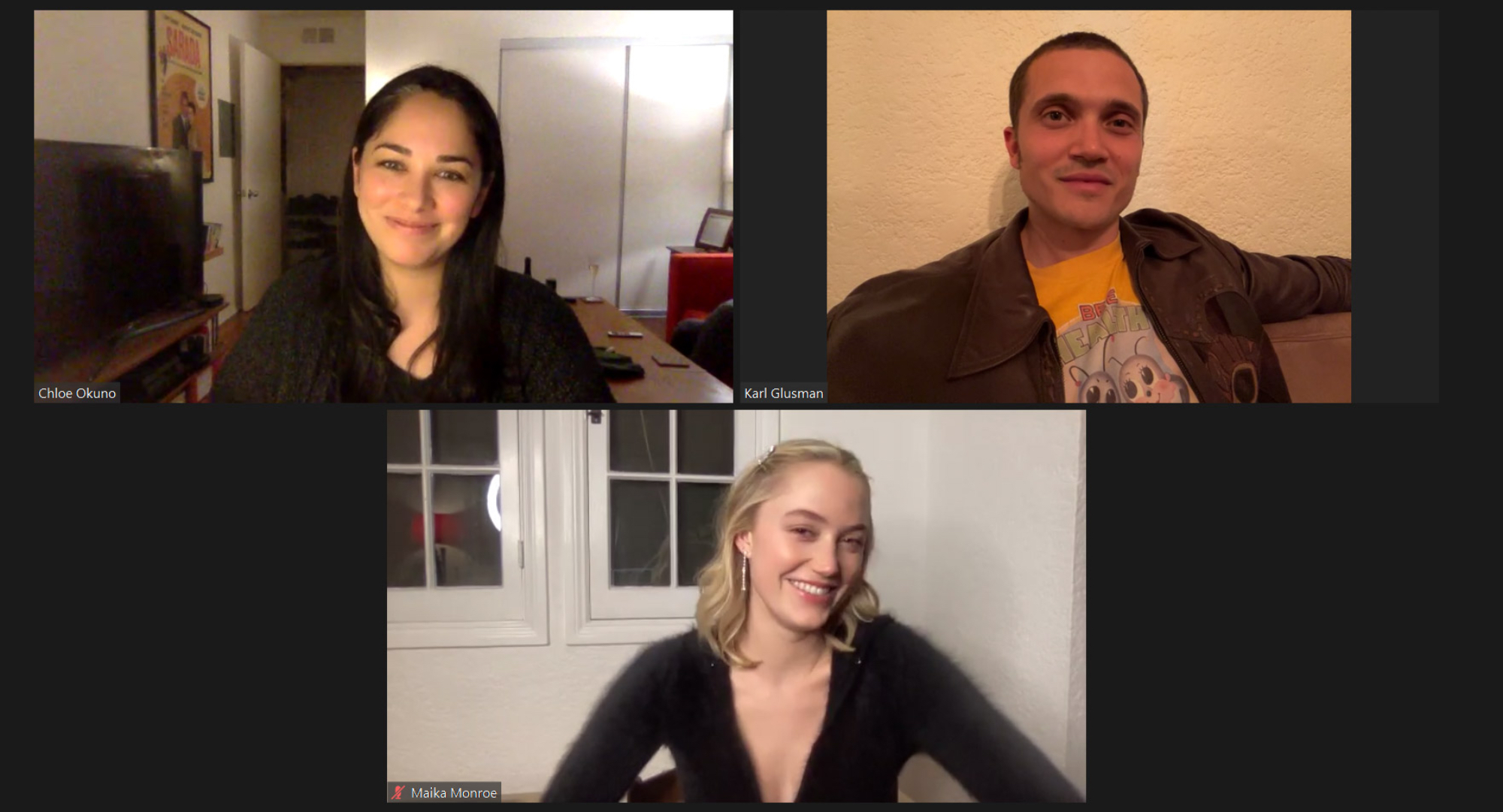‘Watcher’ Movie Review [Sundance 2022]: Chloe Okuno’s Hitchcockian Slow-Burn Horror Emphasizes Style Over Substance
Watcher is a slow-burn horror film overflowing with tension, but it sticks a bit too close to the typical horror tropes. Writer/director Chloe Okuno and co-writer Zack Ford tap into Hitchcockian influences to deliver an eerie feature with a feminist message woven in. Watcher does plenty right, but it had the opportunity to abandon the old genre rule book.
‘Watcher’ introduces voyeurism in a foreign land

Julia (Maika Monroe) moves with her husband, Francis (Karl Glusman), to his native Romania for a new job. She has no current career prospects so she spends her days bored and trying to learn the language. However, Julia witnesses a figure in the window of a neighboring building staring into their apartment at night.
A serial killer called “The Spider” is currently on the loose targeting young women. Julia explores the city but constantly has the feeling that someone is watching and following her. She begins to question whether her creepy neighbor could be the serial killer but becomes increasingly scared that she could be the next target.
Chloe Okuno brings a Hitchcockian tale
Watcher explores the relatable premise of an American caught in a foreign country. Julia has difficulty communicating with people without Francis’ help with translations. She quit smoking and left her acting career behind to make the move. There’s constant self-doubt that hides behind nearly all of Julia’s behaviors.
However, Watcher doesn’t quite go to the foreigner-violent extremes of Hostel. Rather, Okuno and Ford’s screenplay takes on a Hitchcockian tone, pulling inspiration from hits such as Rear Window. The mysterious figure watching her from across the street and the looming presence of “The Spider” constantly instills a sense of paranoia and tension in both Julia and the audience.
The happily married couple begins to crack under the pressure. Francis tries to rationalize every situation in a way that places Julia as the “overwhelmed woman” who is imagining the whole thing. She’s forced to take the situation into her own hands, becoming a watcher herself. Julia spends much of her time alone, except for when she occasionally sees her neighbor, Irina (Madalina Anea).
‘Watcher’ is unsettling, but wary of taking risks

Okuno has an exceptional sense of style in the director role. Watcher immediately draws its audience in from its very first shot. Benjamin Kirk Nielsen’s cinematography tells a visual story that builds with the film’s slow-burn quality to perfection. Watcher manages to twist grocery store aisles into a claustrophobic maze, often taking the most mundane locations and making them terrifying.
Watcher is a slow burn that plants its seed of uneasiness from Julia and Francis’ initial arrival. It continues to grow through the first two acts in curious ways. Okuno has a strong understanding of how to orchestrate a constant sense of tension. Watcher is all about voyeurism, making the audience a watcher in the process. Okuno frames the film to always make it appear as if the audience is looking in at something they shouldn’t be seeing. However, the plot developments are a bit too familiar.
Monroe delivers a believable performance that elevates Okuno’s tension. However, Watcher falls victim to horror tropes, including the husband that doesn’t believe his own wife. There’s no narrative reason for why he suddenly doesn’t believe her. It establishes commentary on the ways women aren’t taken seriously, but it’s an overused horror trope that gets too much screen time. Watcher establishes two acts of highly-effective slow burn that lead to an anti-climactic finale that takes no risks.


